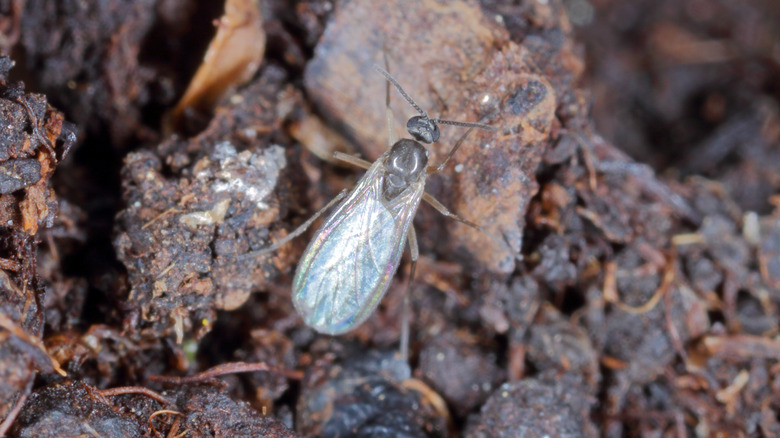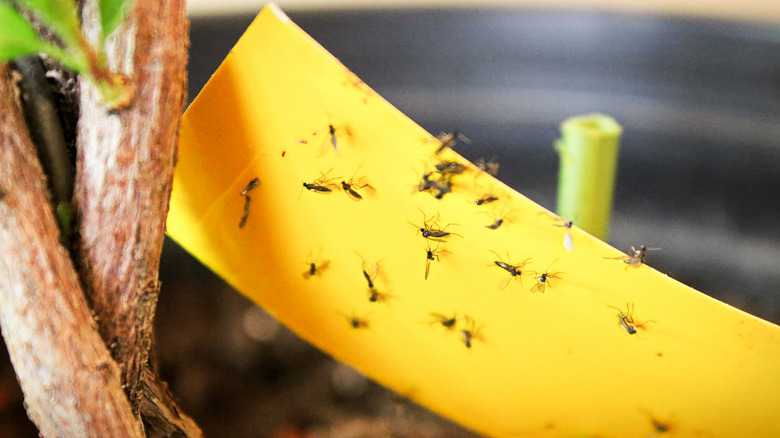The Houseplant Mistake That's Attracting Gnats Into Your Home
Houseplants bring so much joy and beauty to your home, and once you buy one, it's hard not to buy them all! Your houseplant buying spree may abruptly end when you discover gnats flying around near the soil. While gnats can't hurt you, the larvae can do some damage to your plants if there's a large enough population. Gnat larvae eat organic matter in the soil, including the young roots of your plants. Moist conditions are ideal for gnats, so if you frequently find gnats in your home, you might be overwatering your plants.
Remove what gnats need to thrive, and you'll reduce your gnat population in no time. They love water and organic matter, so if you can keep soils dry and clean up loose plant matter like mulch and fallen leaves, you'll be well on your way to getting rid of gnats for good. If you spot gnats on one plant, keep them away from others until you have those taken care of. If plants are kept together, the gnats will spread and infect the soils of surrounding plants — provided that they meet their living requirements.
Reduce water to reduce gnats
Getting rid of gnats is as simple as reducing how often you water your plants. Allow the soil to dry out completely on the top 1 to 2 inches of soil before you water again. Since gnats are so small, an inch or two of dry soil can be enough to make the conditions undesirable. The lack of moisture may kill the larvae in the soil while also encouraging adult larvae to move on and find somewhere else to live.
Clean up and prevent standing water wherever possible. Pour out or cover watering cans when you're finished watering, and empty drain trays about 15 minutes after watering your plants. Make sure your plant containers have drainage holes and well-aerated soil so water can drain out and not puddle at the top. Gnats are attracted to light, so reducing light while letting the soil dry out can be an effective way to reduce the population; just be sure you don't hurt your plant in the process. Remove chunks of material and other debris that may collect water on the soil surface, as these can be ideal breeding grounds for gnats.

